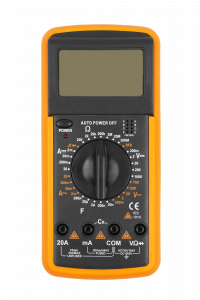
Know How – Expert Edition – Proper Use of Digital Conductance Testers
21 May 2021
Category:
With Graeme Ryder
Graeme is an automotive expert with over 20 years of engineering and industry experience who educates technicians at all levels in practical application and installation best practice. In this edition, Graeme goes into detail on the use of Digital Conductance Testers for evaluating batteries. If you require further technical assistance, please contact the NAPA Batteries Technical Line on 0161 971 5001.
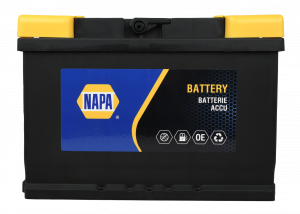
INTRODUCTION
Evaluating the electrical performance of batteries requires adherence to strict testing standards. Though many digital conductance testers claim to meet these standards, the reality is that they are typically designed for end-of-life assessment, which makes their results from newer batteries estimates at best. Determining accurate electrical performance requires an understanding of what limits digital conductance testers and a more precise approach.
MEASUREMENT
Electrical performances are usually found on the battery label, which provides information on its ability to both supply sufficient current to make the engine start and to process various electrical loads. The Cold Cranking Amps (CCA) of an engine determine the current needed for it to turn over, while the Ampere Hour Capacity (or Reserve Capacity) measures stored energy used for auxiliary vehicle equipment when the engine is not running and periods of battery inactivity.
LIMITATIONS
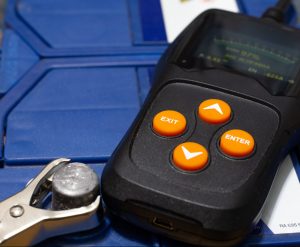
Digital conductance testers traditionally base results on either the impedance or internal resistance of a battery, relying on differing, internally programmed manufacturer algorithms to suggest potential CCA or available capacity. Estimates aside, there are several reasons why this can lead to inaccurate results. Firstly, most testers are made for use on fully charged batteries and, therefore, struggle to read the performance rating of partially charged batteries. Testers also have difficulty generating consistently accurate performance data when used in instant tests on batteries under no load or pressure. This is due to the fact they do not discharge the battery to observe current, voltage and time or measure its temperature. These are all important factors in accurately determining a battery’s performance and carrying out sufficient stress testing.
INCOMPATIBILITIES
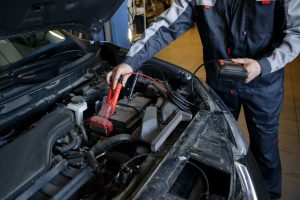
Though newer models and designs have initial drop-down box options for new batteries which allows for better versatility, most digital conductance testers can be ill-suited to reading batteries due to their being designed for end-of-life use and various other incompatibilities. Manufacturers tend to build their batteries differently, leading to inconsistent charge, impedance, and internal resistance levels at the same voltage. This means that testers would have to be tailored to measuring specific brands and styles of batteries at differing temperatures and currents to get accurate readings. Due to having been developed for quick and easy use, testers also struggle to provide insight into the condition of a battery beyond being usable or having failed.
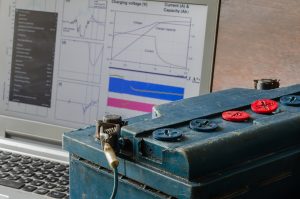 STANDARDS
STANDARDS
Accurate readings of the CCA and capacity of a battery can only be developed by carrying out tests established by European Norm (EN), Japanese Industrial Standard (JIS) or Society of Automotive Engineers (SAE) specifications. This requires testing at precise temperatures and currents using specialised kits. When following these standards, one can determine whether the battery is fully charged and serviceable, discharged and in need of recharge/further tests, service abused or suffering from a manufacturer defect.
ACCURATE TESTING
To provide accurate results in a battery test, there are four recommended pieces of kit: a voltmeter, a variable high-rate discharge tester, a hydrometer and a high-quality charger. The voltmeter should be used to check the open circuit voltage of the battery, the variable high-rate discharge tester stress tests by generating a high current to simulate applying a load to the battery. The hydrometer verifies the specific gravity and the condition of the battery electrolyte, while the charger recharges the battery once testing has been completed. The results from these tools will provide a thorough understanding of a battery’s condition and viability. When testing a battery in this way, it is important to observe proper safety precautions such as eye protection goggles to prevent injury.
Did you know?
The European Norm (or New European Accepted Standard) is a test for ‘12v’ batteries at a temperature of -18°C at full label CCA for 10 seconds down to an end voltage of 7.5v and an additional test at 60% of the label CCA for a further 73 seconds down to an end voltage of 6.0v.
Oil Colour and Associated Myths
Committed to quality, NAPA partnered with Valvoline™ Global Operations to develop a range of high-quality...
Read MoreKNOW HOW - TECHNICAL BULLETIN - TB-NFO-01
Fitment Challenges with Oil Filters N.B. Important Information Please be aware of the differently designed...
Read MoreKnow How - Expert Edition - Brake Fluid Testing
It can be easy to forget about and neglect your brake fluid, but doing so can result in a total braking failure. For a better understanding of why, how, and when you should be testing (and changing) brake fluid, look no further than NAPA Know How.
Read More